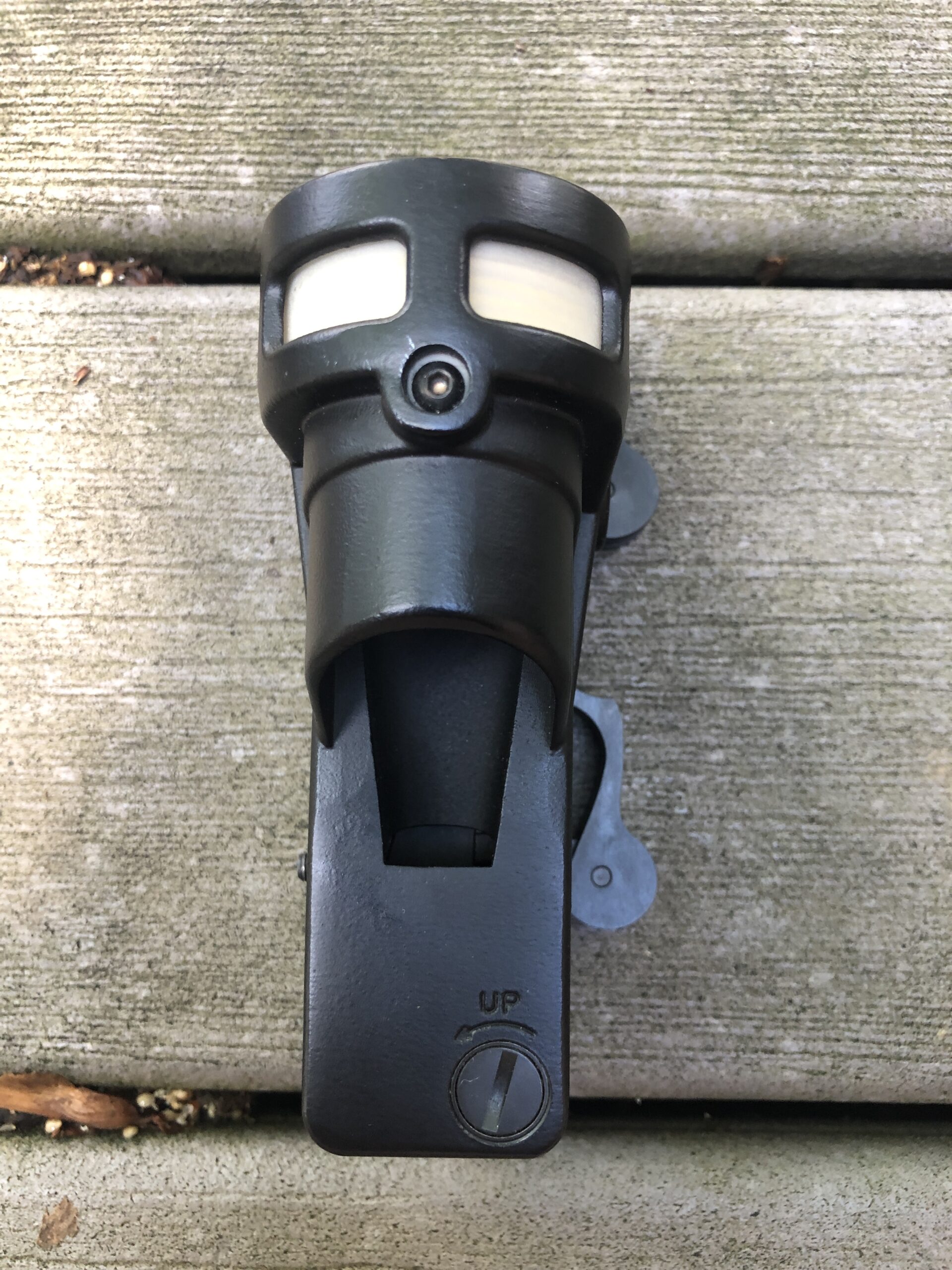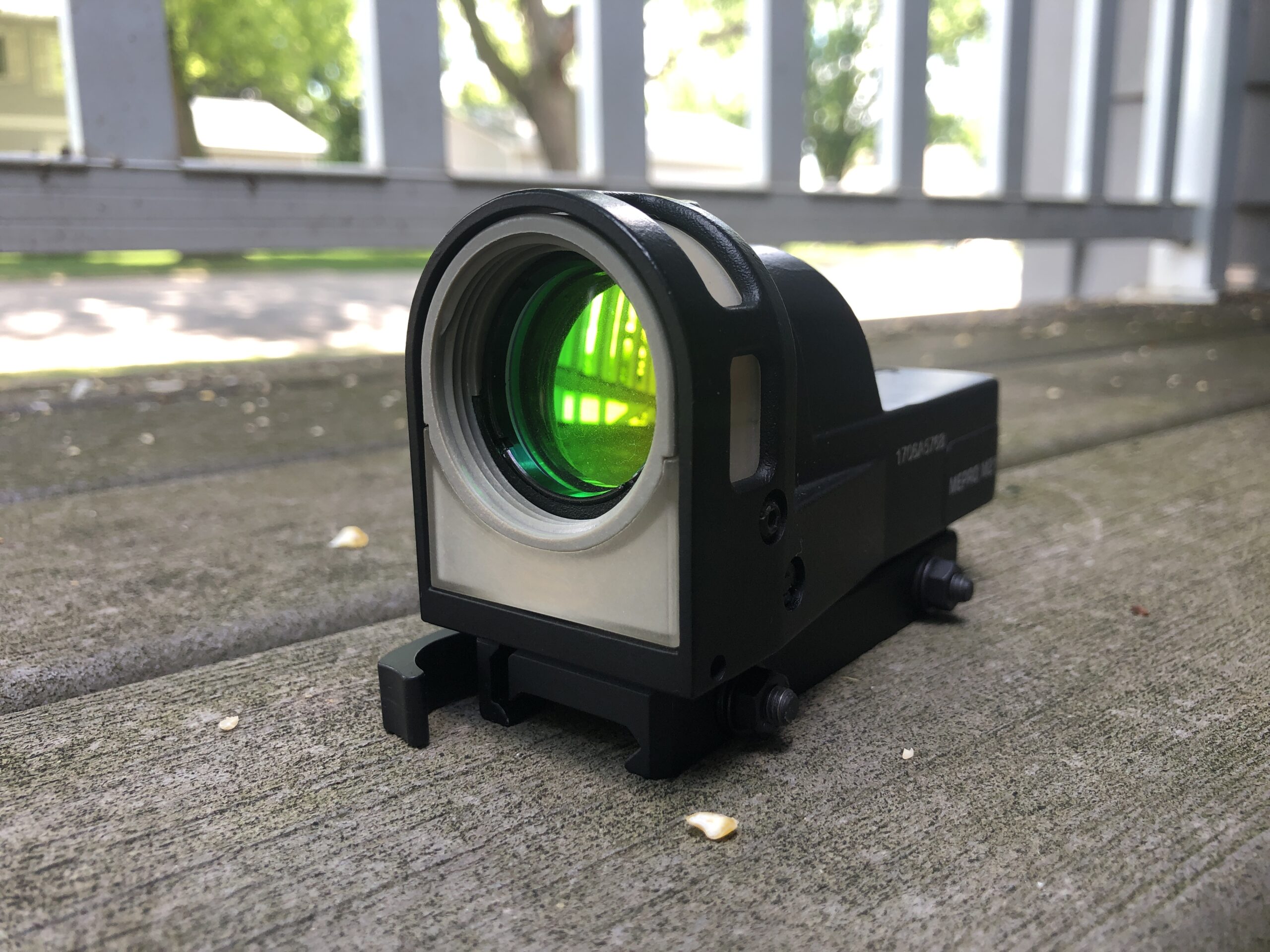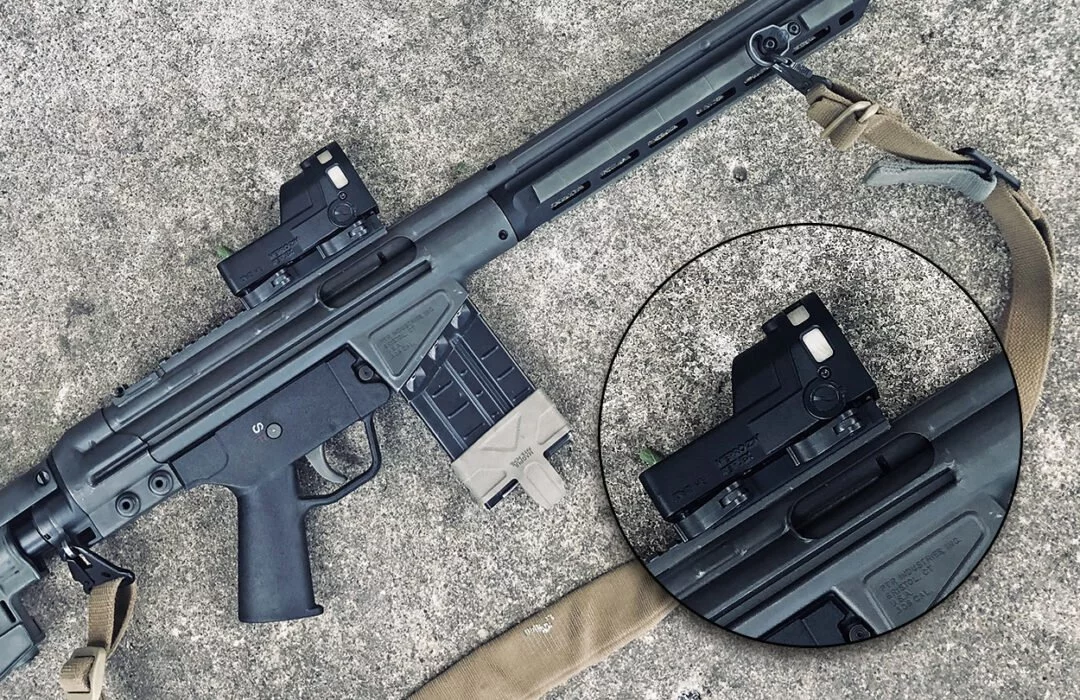M21 Meprolight Review
a review by Mike Kupari
Disclosures: For the past three years, I have been using and evaluating a Meprolight M21 reflex sight. I purchased it in 2017, on sale from Brownells, and have no affiliation or relationship with Meprolight (nor any financial relationship with Black Sheep Warrior).
The M21 is an Israeli-made open reflector (“reflex”) sight that utilizes dual illumination. It has fiber optics to gather ambient light and a small tritium lamp to illuminate the sight in the absence of it. It operates on the same principles as the Trijicon dual-illuminated optics, like the now-discontinued Reflex II sight, the ACOG, and the Trijicon Accupoint.

Optics like these were pioneered by Trijicon in the 1990s and offered several big (and relatively new) advantages at the time. This was obvious even before most users of such optics had even heard of the Bindon Aiming Concept or had heard the term “occluded shooting”. Before LED lights were bright enough or reliable enough for weapons sights, fiber optics and tritium were providing both day and night illumination for them. Even today, when some illuminated optics aren’t really what you’d call “daylight bright”, fiber optics have no trouble in this area. In fact, some of them can be too bright; it wasn’t uncommon for soldiers in Iraq to partially cover the fiber optics of their ACOG scopes with 100MPH tape to reduce the intensity of the illuminated reticle.
Such optics also do not rely on batteries. This is less of an advantage today than it was 20 years ago; today, red dot sights with 50,000+ hours of useful battery life are common. Still, the battery life in most LED-illuminated rifle scopes can be pretty limited, especially when compared to fiber optics, which will work for as long as the sight is intact. Tritium/Fiber Optic sights offer a level of simplicity and ruggedness in not needing batteries and not having any electronics.

Tritium, also known as Hydrogen-3, is the only radioactive isotope of Hydrogen. It has a half-life of 12.32 years. As Tritium decays, it emits beta particles (high-speed electrons ejected from an atom), a type of ionizing radiation. While beta radiation can be harmful, the particles are generally unable to pass through most barriers and will travel only about six millimeters in the air. Human skin will stop beta particles, as will the small borosilicate glass vials that tritium lamps are contained in. Tritium is generally only hazardous if it somehow gets into the human body through an open wound or ingestion.


Tritium gas itself does not produce visible light. When the beta particles interact with certain phosphor materials they will glow, but only dimly. Tritium/phosphor illumination by itself is not generally useful during the day or amidst typical indoor lighting.

The downside to Tritium illumination is that over a period of years, the tritium illumination will begin to dim as a result of radioactive decay. As Tritium decays, it turns into non-radioactive Helium-3, which does not emit beta particles and cannot be used to create illumination. When the half-life of the Tritium in a sight has passed, the illumination will be roughly half as bright, getting progressively dimmer until burning out completely. It’s worth noting that the fiber optics of a dual-illuminated sight will still function and that the tritium lamps can usually be replaced by the manufacturer.

The Meprolight M21 has been in production for nearly two decades and was adopted en masse by the Israeli Defense Force (IDF).

While it probably wasn’t fielded in the same quantities as the Aimpoint or the ACOG, it has nonetheless been proven and has been on the market long enough for any bugs to get worked out. In three years of using this sight on a PTR91 (G3 clone) rifle, I have not had a single issue.
It works exactly as it’s supposed to.


Meprolight M21 Performance
The model I have has what Meprolight calls a “bullseye” reticle. I purchased it thinking it would be like an EOTech reticle, but it’s not. It’s more akin to the donut-and-center-dot reticles used on some ACOGs. Amber in color, the center dot appears to be 3.5-4.5 MOA and is surrounded by a segmented circle. The large circle makes for a big, easy-to-spot aiming point for use in fast and close shooting, and the center dot provides a more precise aiming point.
I have noticed, however, that when shooting smaller targets or at longer ranges, the outer circle can sometimes obscure the target. If you’re concerned with this, you can get versions of this sight with other reticles. Meprolight offers the M21 with a triangle reticle, a 4.3 or 5.5 MOA dot, or an open X aiming point.
The amber illumination, while perhaps not quite as vibrant as red or green, is quite useable in all lighting conditions. I’ve had no trouble picking out the reticle against backgrounds of any color. That said, there are some limitations with fiber optic illumination of which you should be aware. The brightness of the sight is dependent on how much light is shining onto the top and sides of the sight itself.


If you’re indoors, aiming out into daylight, or are using a bright weapons light, the reticle may wash out against the background and be difficult to pick up. This is a downside shared by all fiber optic illuminated sights (and some electronic ones with automatic brightness adjustment). It’s less of an issue on a magnified optic with an etched reticle, but on a reflex sight it can be a problem.

The M21 comes with a manual, a neoprene cover, a lens cloth, and a cleaning brush with a squeeze bottle attached (so you can use puffs of air to clean the dust off the sight). It came with an installed Picatinny-compatible base and features a throw-lever, quick-release mount. The elevation adjustment knob is on top and the windage adjustment is on the right side. The optic height is about 1.65”, ideal for rifles like the M4. It’s easy to attach and remove. The only external controls on the sight are adjustment knobs. Each click moves the reticle one-half of a milliradian or about 1.7 minutes-of-angle.
In testing, I found that the M21 is compatible with a Holosun 3X magnifier. According to my postal scale, the sight and mount together weigh 12.9 ounces.
As you can see from the video, the 30mm lens has a blue tint to it, but in my experience, this did not hinder shooting. After a while, you don’t even notice it.


Like all open reflex sights, you have to take care to not things like dust or dirt block the emitter, otherwise, the reticle will disappear. You should also make sure that the fiber optics don’t get covered, or else the reticle won’t be as bright as it should be.
If the reticle is too bright, you can partially cover the fiber optics with tape.
In 2021, when low-power variable scopes have been adopted for general issue by both the US Army and Marine Corps, something as simple as a reflex sight can seem “retro” or even “quaint”. It’s undeniably old technology, one that is being overshadowed by modern electronic sights and variable optics.
Yea or Nay on the M21?
Why use one now, when other options are available?
Personally, I got mine because it was on sale and it’s been around long enough to be of proven quality. From the perspective of the Israeli Defense Force, such an optic makes a lot of sense. Like all such optics, it is generally easier to use than iron sights. It provides for fast, both-eyes-open shooting at the short-to-medium ranges than an urban battlefield usually offers. At less than thirteen ounces for sight and mount combined, the M21 is considerably lighter than most variable scopes and will be more durable.
When your forces consist of large numbers of conscripts who might lack the benefit of advanced training, a simple reflex sight, not requiring batteries, not needing to be fiddled with once zeroed, is a solid choice.
Where to find the M21:
The Meprolight M21 reflex sight can be purchased online for less than $500 at the time of this writing. It’s not the latest or the greatest but it’ll get the job done.
MTG Tactical (Black Sheep Warrior’s sister site)
About the Mike: Mike Kupari is a former Explosive Ordnance Tech and GWOT veteran who spent several years as a PSC contractor at home and a PMC contractor abroad. He is a successful novelist and prolific freelancer, having written for a number of gun/tactical industry publications. Mike’s previous books include the bestselling Dead Six series (co-authored with Larry Correia), a sci-fi series (Privateer Andromeda), and his most recent yarn, a post-apocalyptic tale called The Family Business. You can find his novels at Baen Books or online at Amazon.com.


